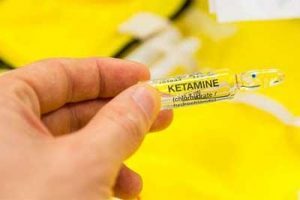- Home
- Editorial
- News
- Practice Guidelines
- Anesthesiology Guidelines
- Cancer Guidelines
- Cardiac Sciences Guidelines
- Critical Care Guidelines
- Dentistry Guidelines
- Dermatology Guidelines
- Diabetes and Endo Guidelines
- Diagnostics Guidelines
- ENT Guidelines
- Featured Practice Guidelines
- Gastroenterology Guidelines
- Geriatrics Guidelines
- Medicine Guidelines
- Nephrology Guidelines
- Neurosciences Guidelines
- Obs and Gynae Guidelines
- Ophthalmology Guidelines
- Orthopaedics Guidelines
- Paediatrics Guidelines
- Psychiatry Guidelines
- Pulmonology Guidelines
- Radiology Guidelines
- Surgery Guidelines
- Urology Guidelines
Intranasal ketamine has more side effects than intranasal fentanyl in children with acute pain

Minor adverse events (e.g., bad taste in the mouth and dizziness) occur more frequently with intranasal ketamine than with intranasal fentanyl in children with suspected extremity fractures. That is the primary finding of a study to be published in the December 2017 issue of Academic Emergency Medicine (AEM), a journal of the Society for Academic Emergency Medicine (SAEM).
The lead author of the study is Stacy L. Reynolds, MD, director of the Pediatric Emergency Medicine Fellowship in the Department of Emergency Medicine at Carolinas Medical Center/Levine Children's Hospital.
Reynolds and colleagues, in their exploratory analysis, detected no difference in efficacy or pain relief between the two drugs. Additionally, no patient in either group experienced a serious adverse event, and none of the side effects required intervention.
Based on their findings, Reynolds, et al, recommends a larger, multicenter, noninferiority study to more rigorously evaluate the safety, efficacy, and potential opioid-sparing benefits of intranasal ketamine analgesia for children with acute pain.
"There is less information about ketamine available than is needed to determine its role as first-line pain therapy in children. This study starts to give us the information necessary to determine ketamine's place as a pain medication and its potential to replace opioids," said James R. Miner, MD, FACEP, chief of emergency medicine at the Hennepin County Medical Center and professor of emergency medicine at the University of Minnesota.
Dr. Miner has done extensive research in acute pain management and sedation, monitoring during resuscitation, and in health care delivery. He is the author of a textbook entitled "Emergency Sedation and Pain Management."

Disclaimer: This site is primarily intended for healthcare professionals. Any content/information on this website does not replace the advice of medical and/or health professionals and should not be construed as medical/diagnostic advice/endorsement or prescription. Use of this site is subject to our terms of use, privacy policy, advertisement policy. © 2020 Minerva Medical Treatment Pvt Ltd